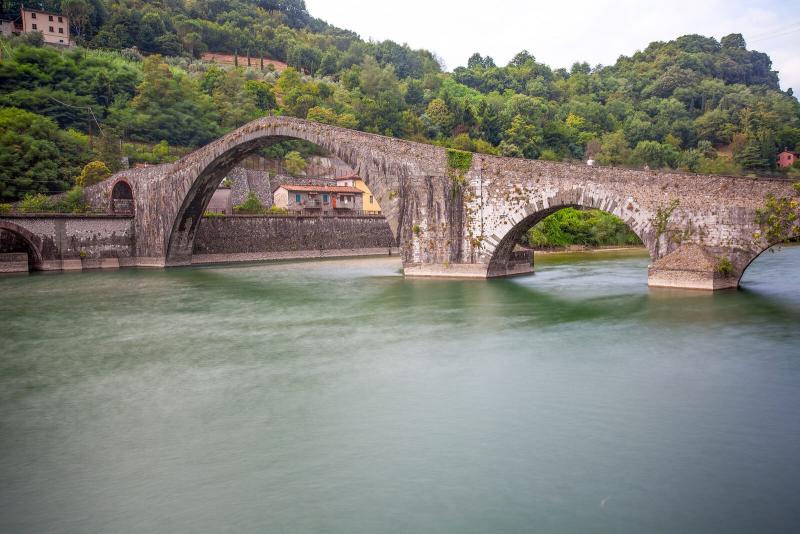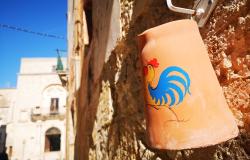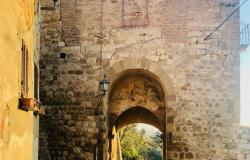Where to Find a Bit of Halloween Spookiness in Tuscany
ITA:

Use player to listen to Italian version
Borgo a Mozzano is a Tuscan village on the banks of the Serchio river, known especially for its Ponte della Maddalena, which most call Ponte del Diavolo – the Devil’s Bridge. A legend associated to it claims it was built by the devil.
In the Middle Ages, a mason working on the construction of the bridge wasn’t able to raise its major arch thus to complete the work, so he asked for the devil’s help. The devil said he would help complete the bridge in exchange for the first soul that walked across it. The mason accepted, but, remorseful, confessed to a priest, who suggested they sent a dog (a different version says a pig) instead of a person. The devil, mocked, disappeared into the river. And in the darkest evenings, you can still see the shadow of a four-legged being wandering around the bridge in search of the mason’s soul.
The Ponte della Maddalena dates back to around the year 1000 when the Countess Matilde di Canossa ruled over a vast portion of north-central Italy including the Garfagnana. The current structure is due to the reconstruction carried out by Castruccio Castracani, condottiero and lord of nearby Lucca, in the 1300s.
The bridge has the classic medieval structure known as ‘donkey’s back - crossing the river with a semi-circular arch as wide as possible, which makes the bridge higher in the middle.
It is called Ponte della Maddalena because of an oratory that stood at the foot of the structure on the left bank of the river Serchio.
Even today, it has maintained an aura of mystery and eeriness, and becomes especially popular to visit around Halloween, along with the village of Borgo a Mozzano itself, where a major Halloween celebration takes place on the 31st and in the days before.
Borgo a Mozzano è un borgo toscano sulle rive del fiume Serchio, noto soprattutto per il Ponte della Maddalena, chiamato dai più Ponte del Diavolo. Una leggenda ad esso legata afferma che fu costruito dal diavolo.
Nel Medioevo, un muratore che lavorava alla costruzione del ponte non era in grado di alzare l'arco maggiore per completare il lavoro, così chiese l'aiuto del diavolo. Il diavolo disse che avrebbe aiutato a completare il ponte in cambio della prima anima che l’avrebbe attraversato. Il muratore accettò, ma, pieno di rimorso, si confessò a un prete, il quale suggerì di inviare un cane (una versione diversa dice un maiale) invece di una persona. Il diavolo, deriso, scomparve nel fiume. E nelle notti più buie, si dice, è possibile scorgere l'ombra di un essere a quattro zampe che si aggira nei pressi del ponte alla ricerca dell'anima del muratore.
Il Ponte della Maddalena risale all'incirca all’anno Mille, quando la contessa Matilde di Canossa regnava su una vasta porzione dell'Italia centro-settentrionale compresa la Garfagnana. L'attuale struttura è dovuta alla ricostruzione effettuata da Castruccio Castracani, condottiero e signore della vicina Lucca, nel XIV° secolo.
Il ponte ha la classica struttura medievale nota come ‘schiena d’asino’ che attraversa il fiume con un arco semicircolare il più ampio possibile, rendendo il ponte più alto al centro.
Si chiama Ponte della Maddalena poiché un oratorio sorgeva ai piedi della struttura sulla riva sinistra del fiume Serchio.
Ancora oggi, il ponte ha mantenuto un'aura misteriosa e un po’ inquietante e diventa particolarmente visitato vicino ad Halloween, insieme al villaggio di Borgo a Mozzano, che ogni anno ospita una grande celebrazione di Halloween il 31 ottobre e nei giorni precedenti.











